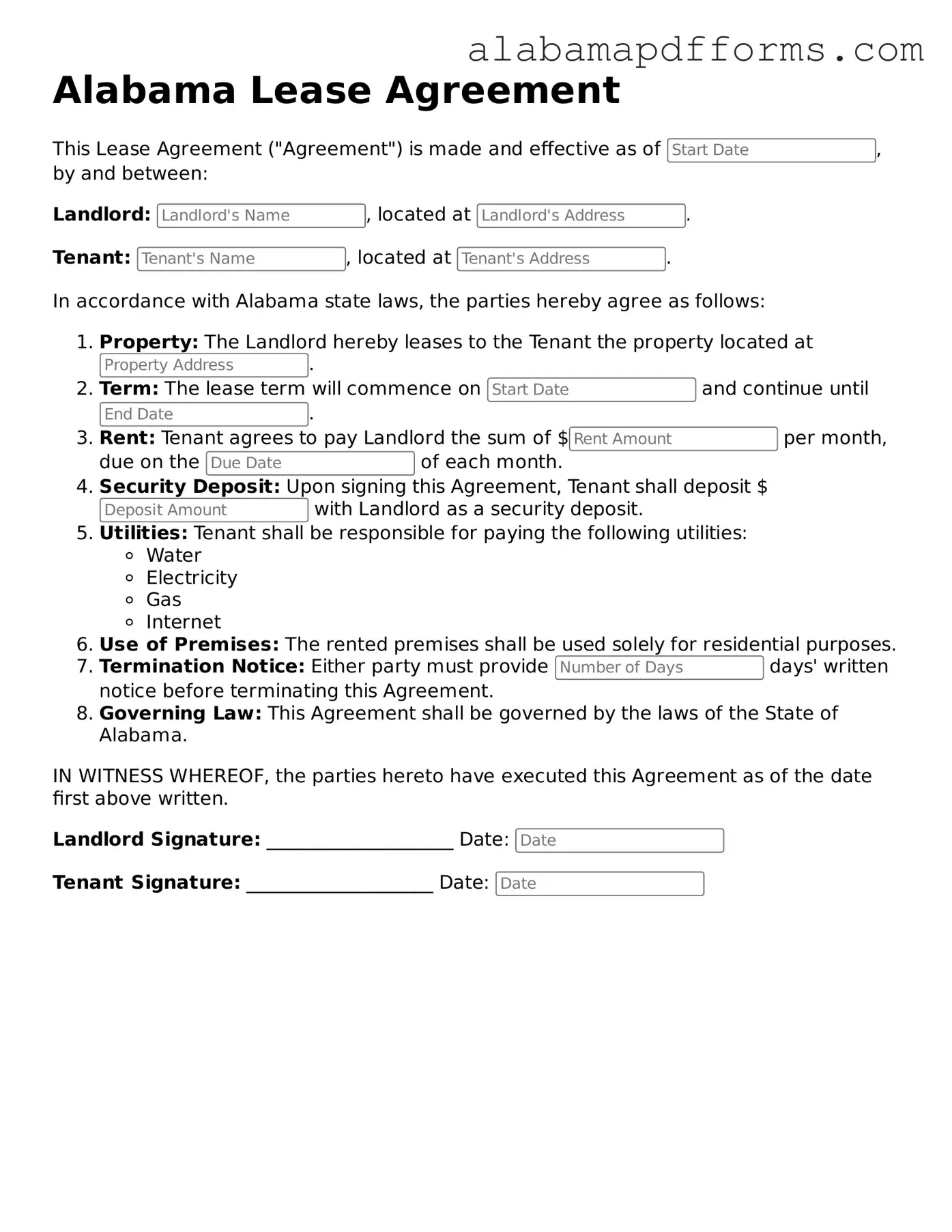Filling out the Alabama Lease Agreement form can be a straightforward process, but many individuals make common mistakes that can lead to complications later on. One of the most frequent errors is failing to include the correct names of all parties involved. It is essential to list every tenant and landlord accurately. Omitting a name can create confusion and may even lead to legal disputes.
Another mistake often seen is neglecting to specify the rental property’s address clearly. This detail is crucial, as it identifies the location being leased. Without a complete and accurate address, issues may arise regarding the property's boundaries and responsibilities.
Additionally, people sometimes overlook the lease term. Clearly stating the start and end dates of the lease is vital. A vague or missing lease term can result in misunderstandings about when the agreement begins and ends, potentially leaving tenants in limbo.
Some individuals fail to outline the rent amount and payment details. The lease should specify how much rent is due, when it is due, and acceptable payment methods. Ambiguity in this area can lead to disputes over payment expectations.
Security deposits often become a point of contention. Many people forget to include information about the security deposit in the lease. It is important to state the amount, the conditions for its return, and how it will be held. This transparency helps prevent conflicts when the lease ends.
Another common error is not addressing maintenance responsibilities. The lease should clarify who is responsible for repairs and maintenance. Without this information, tenants may assume they have more rights than they do, or landlords may expect tenants to handle repairs that are not their responsibility.
Some individuals do not include provisions for breaking the lease early. This oversight can create significant issues if a tenant needs to move before the lease term ends. Including clear terms for early termination helps protect both parties.
Moreover, many fail to read the entire lease before signing. It is crucial to understand all terms and conditions. Signing without comprehension can lead to unintended consequences and obligations.
Finally, people sometimes forget to keep a copy of the signed lease. Having a copy is essential for both landlords and tenants. It serves as a reference point for the terms agreed upon and can be invaluable in case of disputes.
